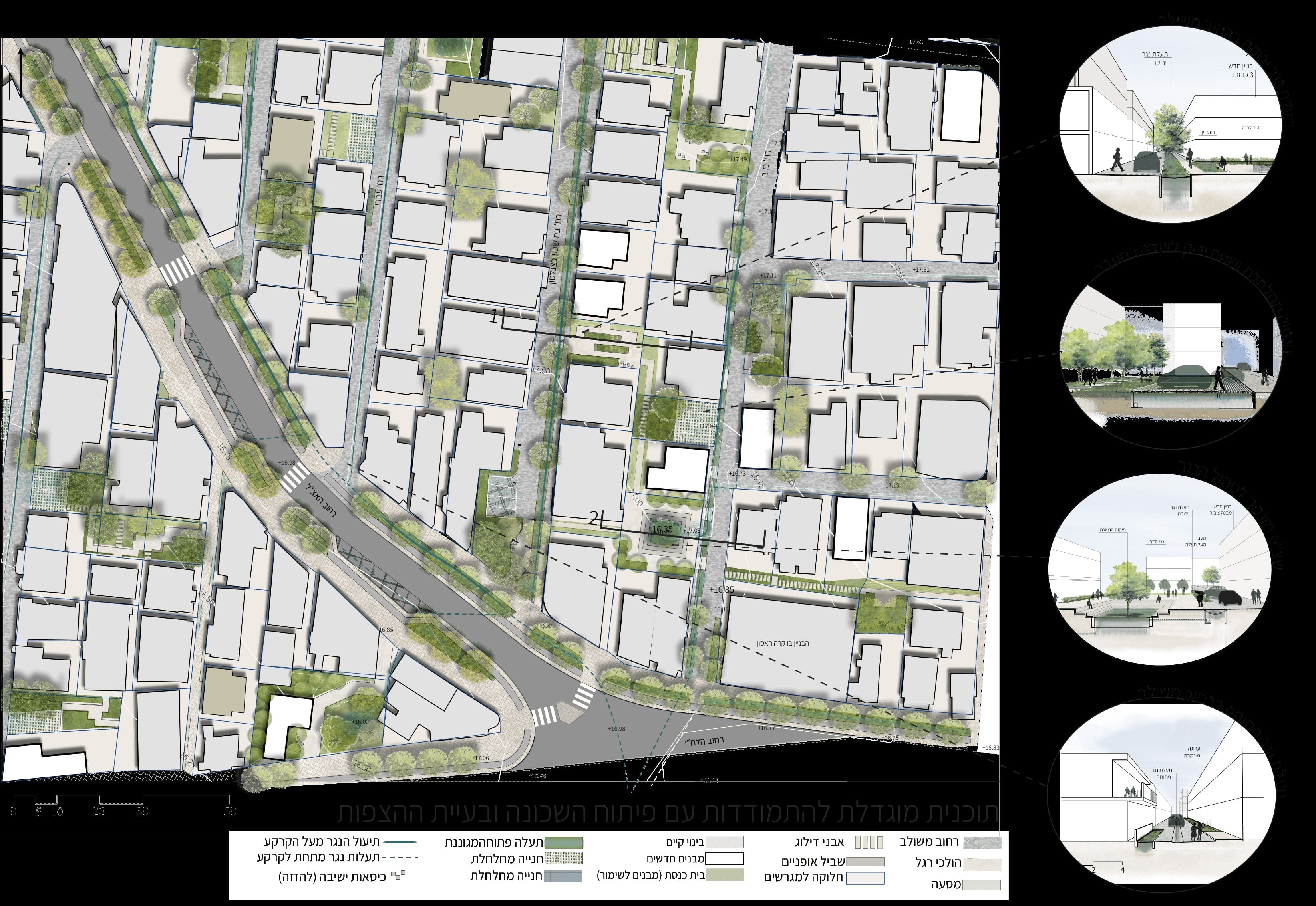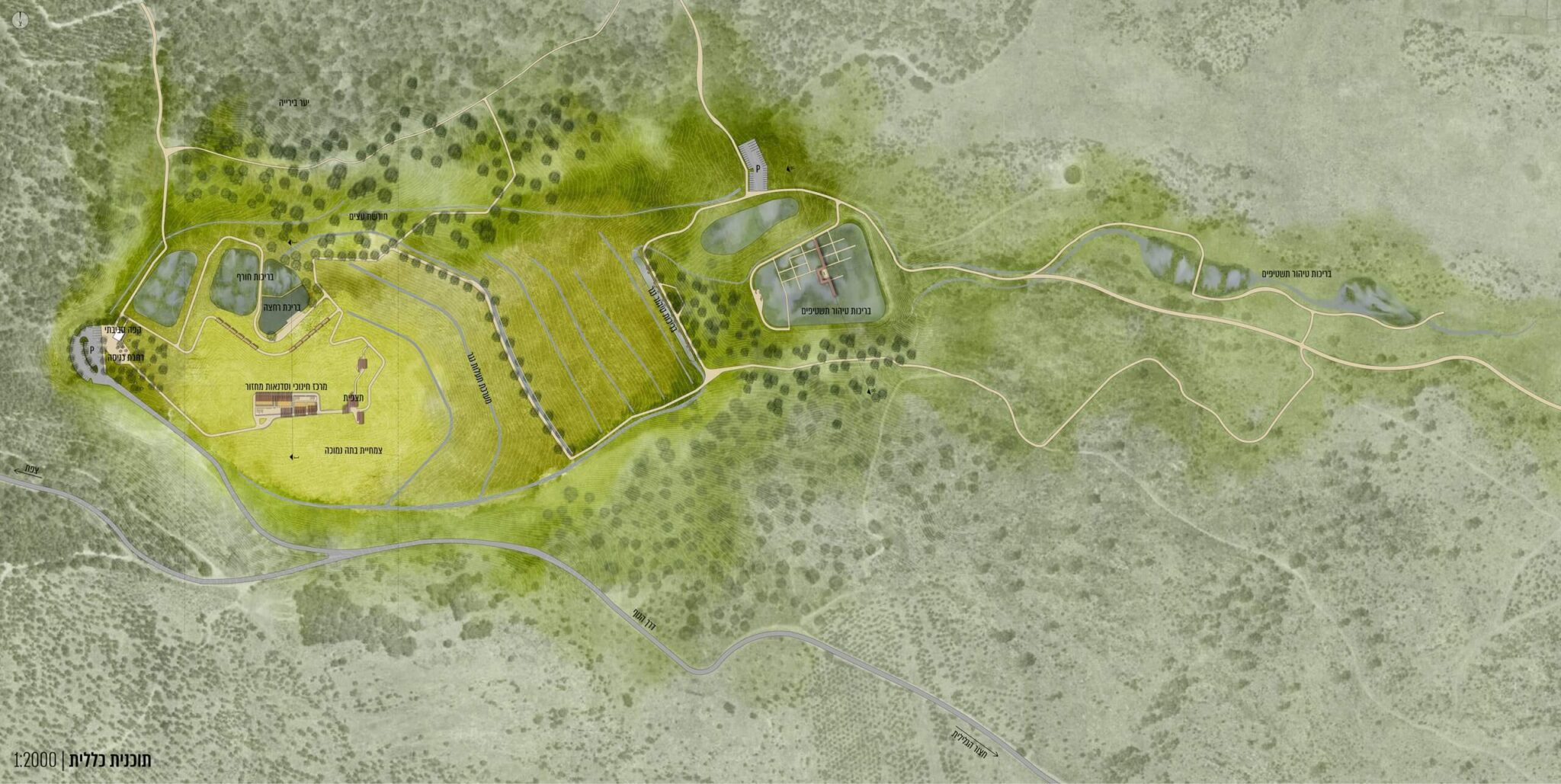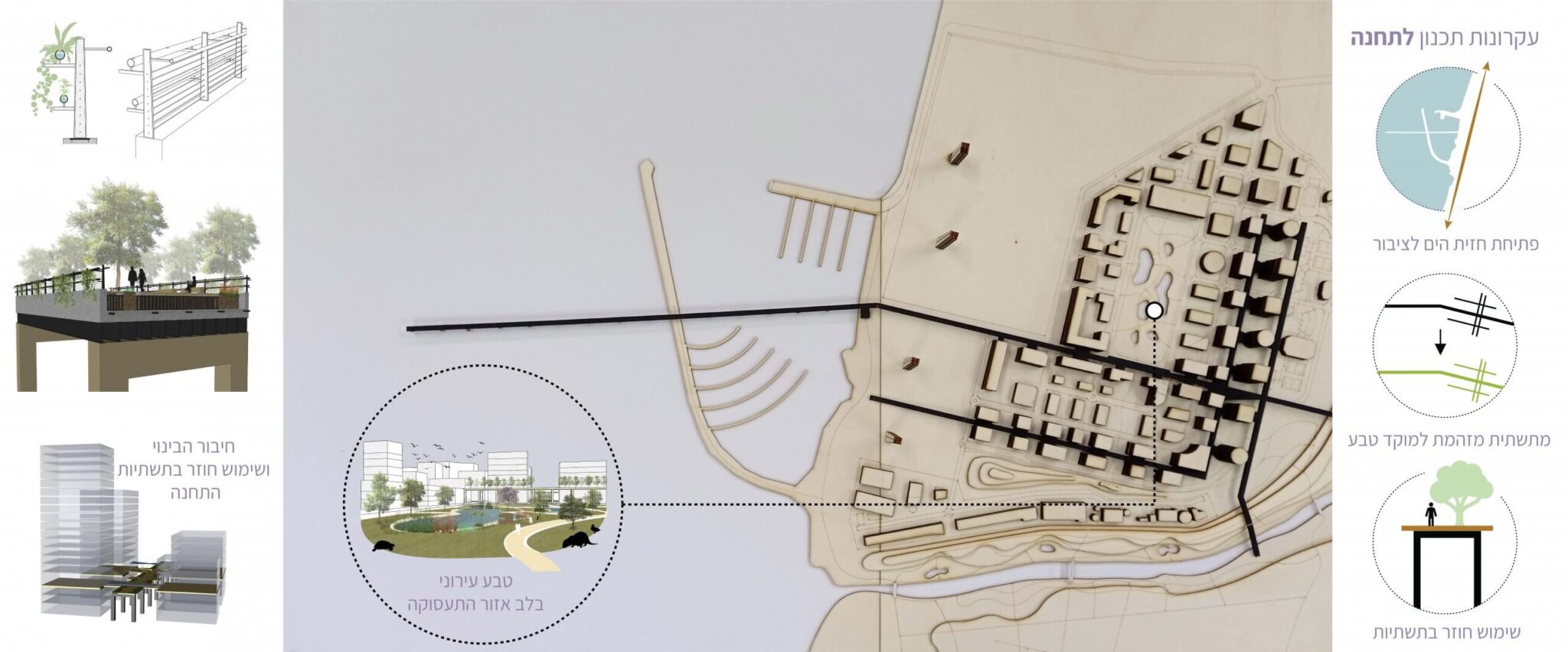A green city? This is not a paradox. An optimistic look at a differently designed future, through the final projects of the landscape architecture course at the Technion, which dealt with creative solutions for a more sustainable planning of the Israeli space
By Amnon Director - Angle - Science and Environment News Agency

Imagine a day when mountains of garbage will turn into green parks with blue pools, a day when - instead of black smoke - the chimneys of factories will be shut down, and the vast areas will be converted into public spaces. If you can't imagine it, you can also take a look at the final projects of the graduates of the landscape architecture track at the Technion, who turned an imagination into a venture.
In recent years, a task has been added to these graduates, who plan the built and open space: today, more than ever, landscape architects are key figures in creating sustainable spaces. As part of the "climate and environment crisis _ local landscapes LandBasics" studio, the students tried to find creative solutions for a greener planning of the Israeli space.
"The crisis has global but also local aspects: its characteristics take on different expressions in each country," explains Matanya Zak, a landscape architect and senior lecturer at the Technion. According to her, Israel's major challenges stem from a combination of population growth, massive overcrowding, continued overall development of the urban space and the growing need for housing. "Our hope is that Israeli planning will focus mainly on densification - while preserving the existing open spaces and landscapes, and not on continuing to expand in the space," says Zak, adding, "As landscape architects, we want to believe that with the help of planning it is possible to influence the future space."
manage the water
As mentioned, the final projects deal with the spatial challenges arising from the crisis, in parallel with the continued development of the Israeli space. One of the interesting projects in the studio seeks to deal with a worrying phenomenon that we have witnessed in recent years: flooding. In recent winters, the residents of the cities in Israel suffer from stronger floods. The phenomenon is expected to worsen And experts point to the design and performance failures that cause this situation. In a project called "Renewable Hope", student Aden Mosari offers a solution to deal with the problem of flooding in an old and weakened urban fabric, while preserving the urban heritage.

The project focuses on the Hatikva neighborhood in southern Tel Aviv. In 2020, the couple Dean Shoshani and Stav Harari found their deaths there, when they were trapped in a flooded elevator in the parking lot. Mosari tries to provide an answer to the construction and densification that preserves the neighborhood fabric and the spatial-community qualities she identified in it; At the same time, she wants to take care of the management of surface runoff (rainwater that flows on the surface of the ground instead of percolating and may cause flooding) and to address the issue of drainage in the neighborhood. Among other things, she proposes to plan a strip of park where the excess runoff will be managed, so that it will also be a significant separation from the Ayalon routes. The new park will make it possible to include a new building plan, with a higher density and a combination of public and educational institutions. In addition, Mosari proposes to include a set of tools for managing the runoff, which includes vegetation in the public space, green-blue roofs (which are built from a system aimed at storing and treating rainfall) and more.
Trash to gold?
One of the biggest environmental challenges in Israel is the issue of waste, and the students were also required to address it. Israel is a garbage power: About 6 million tons of municipal waste are produced here every year - a figure that is at the top of the world table. In addition, According to the State Comptroller's report from 2021, while most OECD countries use high volumes of green solutions such as recycling and recovery to energy (production of energy from waste), the rates of use of these solutions in Israel are significantly lower.
For example, in 2020, while in all the OECD countries about 60 percent of household waste is recycled or turned into energy, In Israel it was only about 22 percent; In addition, that year 78 percent of our waste was transferred to the landfill - a rather polluting solution. "Ambitious plans of the Ministry of Environmental Protection Planning to reverse the percentages"From 80 percent landfill and 20 percent recycling and recovery for energy, to 20 percent landfill and 80 percent green solutions, by 2030," explains Zak. "At the same time, there are different types of landfills, and there is no one magic solution for all of them."
The mixed waste landfills produce environmental hazards which harm public health and cause bad odors, air pollution, greenhouse gas emissions and even soil and groundwater pollution. According to data from the Ministry of Environmental Protection, within a year a significant shortage of land for landfilling waste is expected in Israel. Gal Zeev's project, "from landfill to landfill", deals with the question of how it is possible to reuse the mixed waste landfills after they are closed and returned to the public space.
The project focuses on the "Taanim" waste site in the Upper Galilee, which although closed in 2019, still pollutes the land and the streams that pass by it and flow into the Kinneret. The project proposes the restoration of the landfill site while treating the polluted water that is washed from the waste using a purified pool (without chemicals). Beyond the fact that the pools will increase the biological diversity in the area, they will also serve as a tourist site. The landfill will become an experiential center that exposes the public to the hazards of waste and human damage, and at the same time - you will learn about repair and reduction options, such as recycling and reuse.
Energy never remains
The use of coal-based energy is considered one of the most polluting processes in the world, and therefore it also became an important topic in the students' final projects. According to the World Health Organization estimate from 2015, the air pollution from coal plants in Israel, in addition to the air pollution from transportation - constitute the main sources of risk to the health of the residents. as per "Health and Environment in Israel 2020" report of the Health and Environment Fund, every year over 2,000 Israelis die as a result of exposure to polluted air. Pollution also has other effects: the economic damage it causes is estimated at NIS 27 billion per year. In accordance with the global trend, it was also decided in Israel to close most of the coal-fired power plants by 2025. What will happen to those plants?

Shaul Rubin's project, "Alternating Energy", deals with the future of the "Rotenberg" coal-fired power plants in Ashkelon and "Orot Rabin" in Hadera. In the first phase, the plants are expected to be fully converted to gas, and according to the government's statements, in the second phase they will switch to the production of renewable energies, until 2050. The project examined how the change in energy in the power plants will affect the area, taking into account the changes that will occur as a result of the development in the national and global energy system. Robin offers a broad view of the trend: new planning that includes aspects such as improved connectivity of public transportation to factories, conservation and ecological restoration near the beach and the mouth of the river, and the creation of new public spaces from areas that are currently within the power plant area.
These groundbreaking projects are creative and important, but unfortunately - many of them remain on the drawing board. It is to be hoped that as many of them as possible will be implemented, that sustainability will become an integral part of urban planning - and that the activist spirit, striving for change, will influence the policy makers in the near future. "The academic year began with the Glasgow conference, which created excellent timing for the initiative," concludes Zak. "We all understand that the time has come to deal with the climate crisis."
More of the topic in Hayadan:
